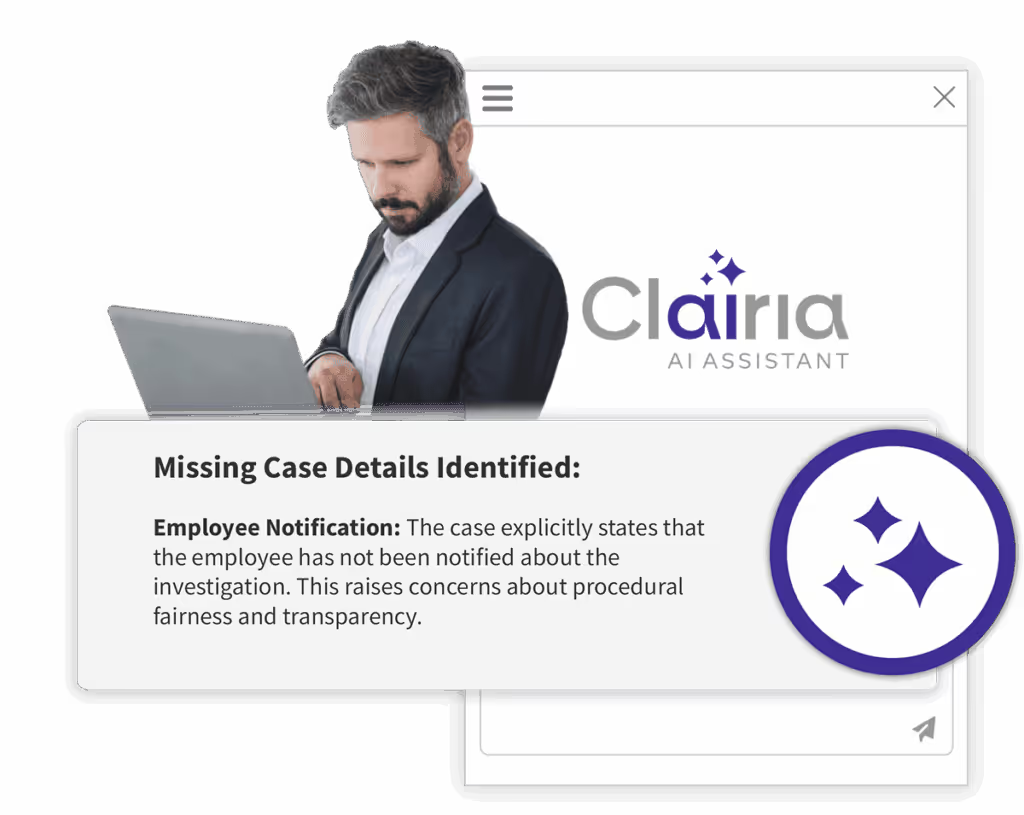According to one survey, almost half of HR employees are dealing with more employee relations issues than before the COVID-19 pandemic. That means addressing more complaints and grievances to ensure employees feel safe, happy and motivated in the workplace.
An employee grievance letter is a formal complaint, submitted to an employer in writing, that outlines an employee's concern or problem at work. In a non-unionized workplace, grievances are simply formal complaints. In a unionized workplace, there are rules surrounding grievance-handling procedures.
Responding to every grievance in a timely, fair manner is essential. Taking the proper grievance-handling steps promotes a culture of understanding in your workplace. In addition, it can save your organization's reputation and bottom line. Here’s how to respond to a grievance from an employee.
What Is a Grievance Letter and Why Employees File One?
In the workplace, "grievances are concerns, problems or complaints that employees raise with their employers." Grievances differ from complaints, though, in their formality.An employee complaint can be made verbally, or via a hotline or an email. A grievance, on the other hand, must be formally filed in the form of a grievance letter, usually submitted to the employee's manager within 30 days of the event or action that caused the issue.Employees may submit grievance letters for a wide range of reasons, including:
- Compensation and benefits
- Employment and personnel policies
- Health and safety concerns
- Bullying, harassment or discrimination
- Workload or work distribution
- Work environment or conditions
- Management-employee relations
- Terms and conditions of employment
- Organizational changes
- New working practices
RELATED:Effective Grievance Handling: The Ultimate Guide for Employers
How to Respond to a Grievance Letter: Step-by-Step
When an employee submits a grievance letter in a non-unionized workplace, their manager should first try to settle the issue informally, such as asking the involved parties to “talk out” their issues. Conversely, unionized workplaces should follow union rules for grievance-handling. If the grievance is of a more serious nature or can't be resolved, however, the formal resolution process begins.
Step 2: Schedule a Grievance Meeting
When an employee files a grievance letter, hold the resolution meeting within five business days. Before the meeting, inform the employee, in writing, about the details. Include the time and location of the meeting, who will hear the grievance and a note on the employee's right to be accompanied by a fellow employee or union representative.
The grievance meeting should be held in a private, distraction-free location. In addition to the employee's manager, a Human Resources team member and the employee's optional representative, invite someone who isn't involved with the case to take meeting notes.
Be sure to promote a relaxed, open atmosphere as you work toward a resolution. Encourage open discussion and dialogue. Allow the employee to reasonably "let off steam" without taking offense. Above all, maintaining a problem-solving attitude helps ensure a quick resolution that works for everyone.
RELATED: How to Handle Harassment Complaints
Step 3: Evaluate and Communicate Your Decision Fairly
After the grievance meeting, take a few days to decide on appropriate action to take. Try to see all sides of the issue. In addition, be willing to take any new information into account when choosing a course of action. Further unbiased investigation may be required before you come to a final decision.
After deciding on the next steps, inform the employee (in writing) within five business days about the course of action. Explain why their grievance has not been upheld (if applicable) and remind them that they have the right to appeal the decision. After that, monitor and review the action to ensure that it effectively deals with the issue the employee raised. If another employee is involved (such as in a harassment case), inform the respondent of the decision as well.
Step 4: Handle Appeals with Transparency
If the employee is unhappy with the action taken after the grievance meeting, they may choose to file an appeal. To reduce stress, make a plan in case they decide to appeal your decision. Require that the employee submit their grounds for the appeal in writing.
The appeal meeting should have a similar format to the grievance meeting, but someone new (someone at the next level of management, for instance) should hear the grievance. Bring records and notes from the grievance meeting for review. Take particular note of new information that has come to light. After the meeting, inform the employee in writing of the results of the appeal and your reasoning behind them, along with a note that the decision is final.
RELATED: ADR in the Workplace: When to Use it and Why
A timely, fair and well-documented response to a grievance letter establishes your organization as a great place to work. Failure to address an employee's concerns, on the other hand, may lead to reduced productivity, losing the employee or even a lawsuit.
FREE CHECKLIST
A streamlined grievance response letter begins with a strong grievance handling policy.Use this checklist to make sure yours contains all the information it needs.
Get the Checklist
Understanding the Employee Grievance Procedure
A well-structured employee grievance procedure ensures that workplace concerns are addressed efficiently and fairly. Organizations must establish a clear, step-by-step process that employees can follow when they encounter issues related to workplace policies, discrimination, harassment, or other conflicts. Below are the key steps in a formal grievance procedure:
1. Filing the Complaint – The process begins when an employee submits a written grievance, detailing the nature of the complaint, relevant dates, and any supporting documentation. Many organizations set a deadline (e.g., within 30 days of the incident) to encourage timely reporting.
2. Initial Review and Acknowledgment – Upon receipt of the grievance, HR or the designated authority must acknowledge the complaint in writing, typically within 5 business days. This acknowledgment should outline the next steps and expected timeline for resolution.
3. Investigation and Evidence Collection – The organization conducts an impartial investigation, including reviewing documents, interviewing relevant parties, and gathering evidence. This phase typically takes 10-30 business days, depending on the complexity of the case.
4. Decision and Response – Once the investigation concludes, management or HR issues a formal response, detailing the findings and any proposed corrective actions. Employees should receive a written decision within a reasonable timeframe (e.g., 10 business days after the investigation ends).
5. Appeal Process – If the employee is dissatisfied with the decision, they may appeal within a specified period (e.g., 10 business days).The appeal process involves a higher level of review, often by senior management or an external mediator.
6. Final Resolution and Documentation – The final decision is communicated in writing, and all documentation is securely stored for compliance and future reference. Proper recordkeeping ensures transparency and legal protection.
Best Practices for Investigating Employee Grievances
Conducting a fair and thorough investigation is crucial for resolving grievances effectively. Employers should follow best practices to ensure an impartial process:
- Assign a Neutral Investigator – Select a trained HR professional or an external investigator to avoid conflicts of interest and ensure objectivity.
- Establish Confidentiality – Maintain strict confidentiality to protect all parties involved and prevent retaliation.
- Interview All Relevant Parties – Gather statements from the complainant, the accused, and any witnesses. Use open-ended questions and document responses carefully.
- Collect and Review Evidence – Examine emails, performance records, security footage, and other relevant materials to corroborate statements.
- Follow a Consistent Process – Apply the same investigative procedures across all cases to ensure fairness and compliance with company policies and legal requirements.
- Communicate Findings Clearly – Once the investigation is complete, provide a well-documented report summarizing the evidence, findings, and recommended actions.
- Take Appropriate Action – Implement corrective measures based on the findings, which may include disciplinary action, mediation, or policy revisions.
How to Prevent Employee Grievances in the Future
Proactive measures can significantly reduce the number of employee grievances. By fostering a positive workplace culture and addressing potential issues before they escalate, organizations can minimize conflicts and improve employee satisfaction. Here are key strategies:
- Promote Open Communication – Encourage employees to voice concerns informally before resorting to formal grievances. Implement regular check-ins and an open-door policy.
- Train Managers on Conflict Resolution – Provide leadership training on handling disputes, active listening, and de-escalation techniques.
- Enforce Fair and Transparent Policies – Clearly outline workplace policies, disciplinary procedures, and reporting structures. Ensure policies are consistently applied to all employees.
- Conduct Regular Employee Feedback Surveys – Gather insights on workplace culture and address emerging concerns before they turn into formal grievances.
- Provide Diversity and Inclusion Training – Educate employees on respectful workplace behavior to prevent discrimination and harassment claims.
- Implement an Anonymous Reporting System – Allow employees to report issues confidentially, reducing fear of retaliation and increasing trust in the grievance process.
- Recognize and Address Workplace Stressors – Identify and mitigate sources of workplace stress, such as heavy workloads or lack of work-life balance, to prevent burnout-related grievances.
- By implementing these best practices, organizations can foster a more positive and compliant workplace, reducing the likelihood of employee grievances while promoting a culture of fairness and respect.
Frequently Asked Questions
1. How do you acknowledge an employee grievance?
To acknowledge an employee grievance, you should first ensure that the grievance is taken seriously and promptly schedule a resolution meeting within five business days. Inform the complainant of the meeting's details in writing, including the time, location, and who will hear the grievance, while also noting the employee's right to be accompanied by a fellow employee or union representative.
2. How do you respond to an informal grievance?
To respond to an informal grievance, the complainant's manager should attempt to settle the issue informally by encouraging the involved parties to discuss their concerns openly, seeking resolution without the need for formal procedures. However, if the grievance cannot be resolved informally or if it is of a more serious nature (e.g. sexual assault, physical violence), the formal resolution process should commence, following your company's established policies and procedures.
3. How long do I have to respond to a grievance letter?
In non-unionized workplaces, it's recommended to respond to a grievance letter by holding a resolution meeting within five business days after receiving the grievance, ensuring timely acknowledgment and addressing the issue promptly and fairly. In a unionized workplace, consult with your employee's union for required response timelines.
4. What is a grievance letter and how is it different from a complaint?
A grievance letter is a formal written complaint submitted by an employee to their employer, outlining a workplace issue such as harassment, unfair treatment, or policy violation. Unlike a casual complaint, a letter of grievance follows a structured process and often triggers formal investigation.
5. How should an employer respond to a grievance letter?
To respond to a grievance letter, an employer should first acknowledge the complaint in writing, follow established grievance procedures, and arrange a fair meeting. Using an employer response to grievance letter template can ensure consistency and legal compliance during the process.
6. What should be included in a grievance letter against a manager?
A grievance letter against a manager should clearly state the issue, provide specific incidents or dates, include any supporting evidence, and describe how the situation has impacted your work. The formal grievance letter should remain professional and stick to facts.
7. What is the first step when responding to a grievance?
The first step in responding to a grievance letter is to formally acknowledge receipt and review the content thoroughly. This step ensures transparency and signals to the employee that their concerns are being taken seriously.
How Case IQ Can Help
Wondering how to respond to a grievance against you? Your organization needs a modern case management solution like Case IQ. Our software integrates with your intake mechanisms to ensure you capture, address and resolve every grievance efficiently.Learn more about how Case IQ can streamline your intake and triage processes here.










